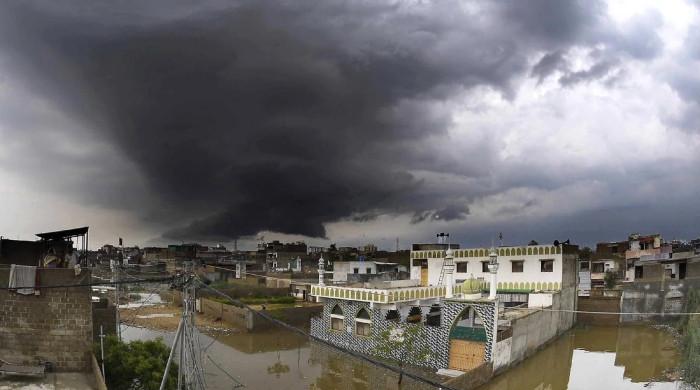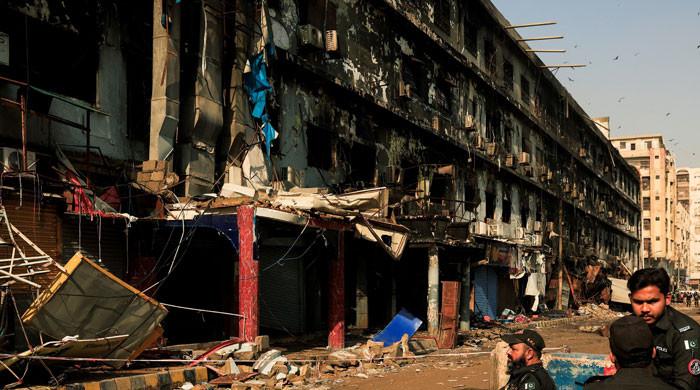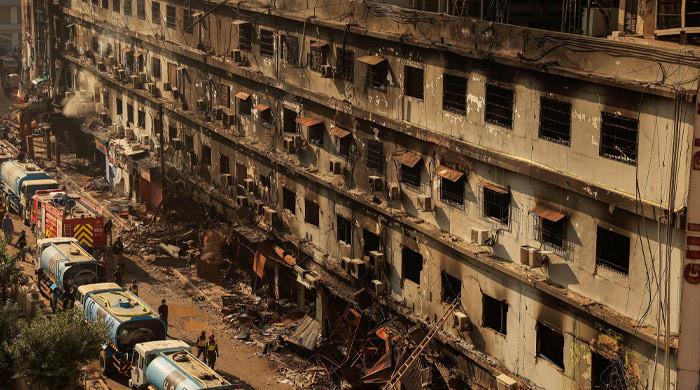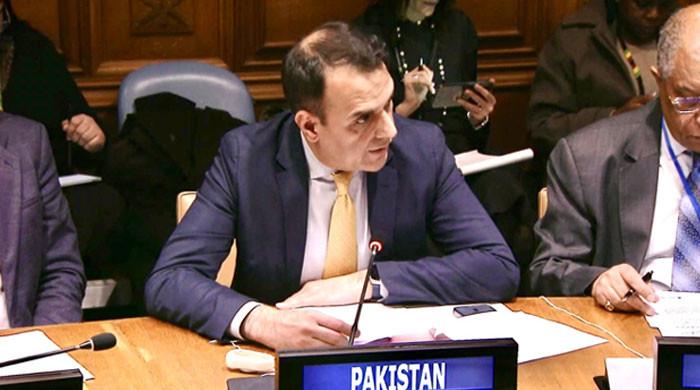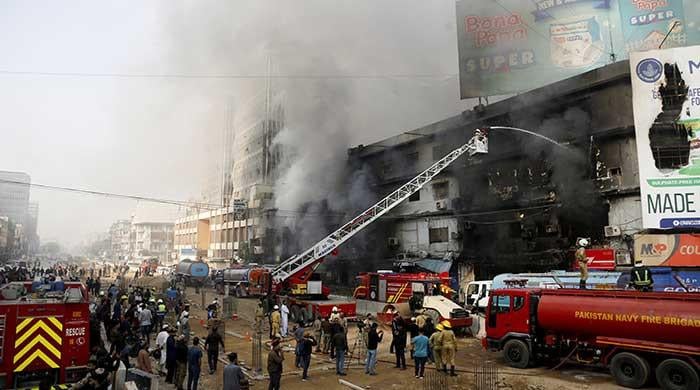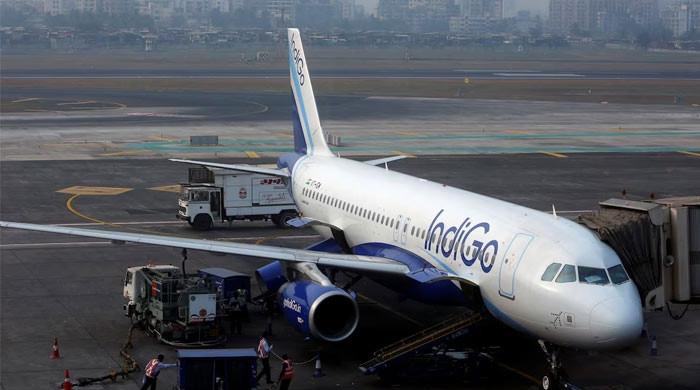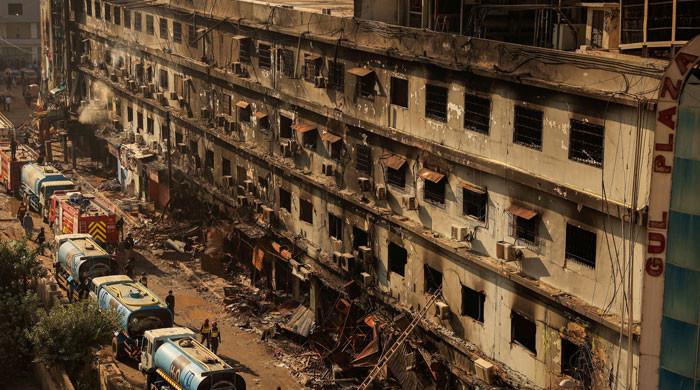Radioactive water: Japan's Fukushima nuclear disaster haunts the world a decade later
Pakistani fishermen protest Japan's plan to dump Fukushima radioactive water into Pacific Ocean
May 07, 2021
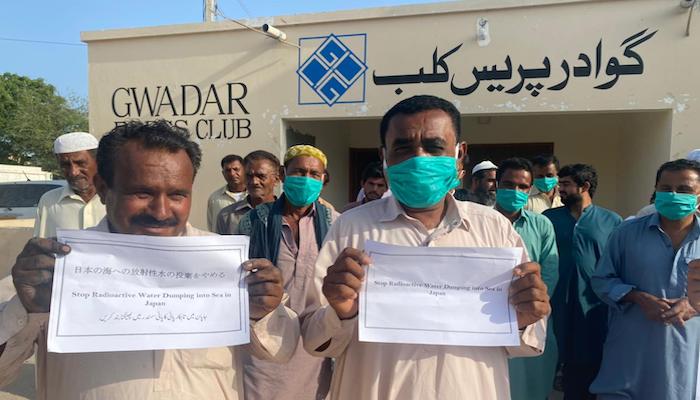
In 2011, the deadly Fukushima tsunami and earthquake claimed more than 18,000 lives and triggered a nuclear meltdown in Fukushima, Japan. A decade later, the world is still haunted by the nuclear disaster's consequences.
In a recent development, Japan decided to dump radioactive water stored at the disaster-hit Fukushima Daiichi nuclear power plant into the Pacific Ocean.
Scores of Pakistani fishermen recently protested this decision of Japan outside the Gawadar Press Club.
With placards containing messages in not only Urdu and English, but also Japanese, the agitation was not like any other protest.
The 9.0-magnitude quake in 2011 was so powerful it shifted the Earth off its axis. It triggered a tsunami which swept over the main island of Honshu, wiping entire towns off the map.
Three out of the six nuclear reactors at the Fukushima power plant run by Tokyo Electric and Power Co (Tepco) were knocked down. The gigantic wave inundated the reactors with force. As the radiation leaked from the plant, authorities set up an exclusion zone which compelled more than 150,000 people to evacuate the area. Even a decade later, that zone remains in place and many residents have not returned.
Read more: Meet the man from Japan who saves forgotten cats in Fukushima's nuclear zone
Reactor buildings at the power plant located in Okuma were damaged by hydrogen explosions. The tsunami anesthetised cooling systems to the reactors, three of which melted down. To avert a nuclear disaster followed by natural calamity, sea water was filled into those nuclear reactors to stop radioactivity from spreading. Cooling down of those reactors cost 1.3 trillion tonnes of water in a decade and now Japan is running short of storage capacity. This is exactly where another crisis is budding.
To meet this crisis, the Japanese government has decided to release the contaminated water back into the Pacific Ocean and this has spurred a global debate.
Radioactive water could contaminate fish exports from Pacific ocean
Geo News got in touch with renowned Pakistani physicist Dr AH Nayyar to talk about Japan's decision.
Dr Nayyar recalled the 1986 Chernobyl nuclear disaster while discussing the Fukushima disaster.
“They could not stop Chernobyl and radioactive clouds once they hovered over Europe from Soviet Union. Radioactivity found its way inside human skin and the world paid the price," he said, adding that as far as Fukushima is concerned, it will be a first experiment of its own kind.
Dr Nayyar pointed out releasing radioactive water into the ocean could mean that if radioactive elements sit in marine life, it will soar chances of it infiltrating into humans via catchments and exports. "When radioactive particles decay, they cause cancer in the human body,” he said.
“People were skeptical in buying fresh milk and powder imported from Europe post 1986 Chernobyl disaster. It could be the same with fish coming from the Pacific ocean. They will have to be carefully examined if they carry radioactive particles. However, waters from the Pacific Ocean will not intrude into the Arabian Sea,” Dr Nayyar concluded.
When will Japan start dumping radioactive water from Fukushima into the Pacific?
On April 13, 2021, after a cabinet meeting, Tokyo said the work to release the contaminated water will start in about two years. The decision was made after years of debate and it will likely take decades for its completion.
Read more: 6.2-magnitude earthquake in Indonesia kills at least 42, injures hundreds
The same radioactive water is now being treated in a complex filtration process that filters out most of the radioactive elements, but tritium which is harmful to humans only in very large doses.
Currently, it is stored in gigantic water tanks, but the plant's operator, Tepco, appraised that these tanks are expected to fill up by 2022.
The water is contaminated as it comes in contact with fuel before leaking into damaged basements and tunnels, where it mixes with groundwater that flows through the site from hills above. The combination results in excess contaminated water that is pumped out and treated before being stored in huge tanks crowding the site.
About 1.3 million tonnes of radioactive water - or enough to fill 500 Olympic-sized swimming pools - are currently stored in these tanks, In 2018, Tepco admitted it had not filtered all dangerous materials out of the water, despite saying for years they had been removed, according to a Reuters report.
Unacceptable and irresponsible, say China, South Korea to Japan
In a statement, China’s foreign ministry called the move “extremely irresponsible” and said it reserved the right to take further action.
South Korea’s government said the plan was “totally unacceptable” and that it would lodge a formal complaint with Japan.
Voices are rising within Japan as well. Greenpeace Japan said it “strongly condemned” the decision.
“The Japanese government has once again failed the people of Fukushima,” Kazue Suzuki, a climate change and energy campaigner at Greenpeace Japan, said in a statement. “The government has taken the wholly unjustified decision to deliberately contaminate the Pacific Ocean with radioactive wastes. Rather than using the best available technology to minimize radiation hazards by storing and processing the water over the longer term, they have opted for the cheapest option.”




